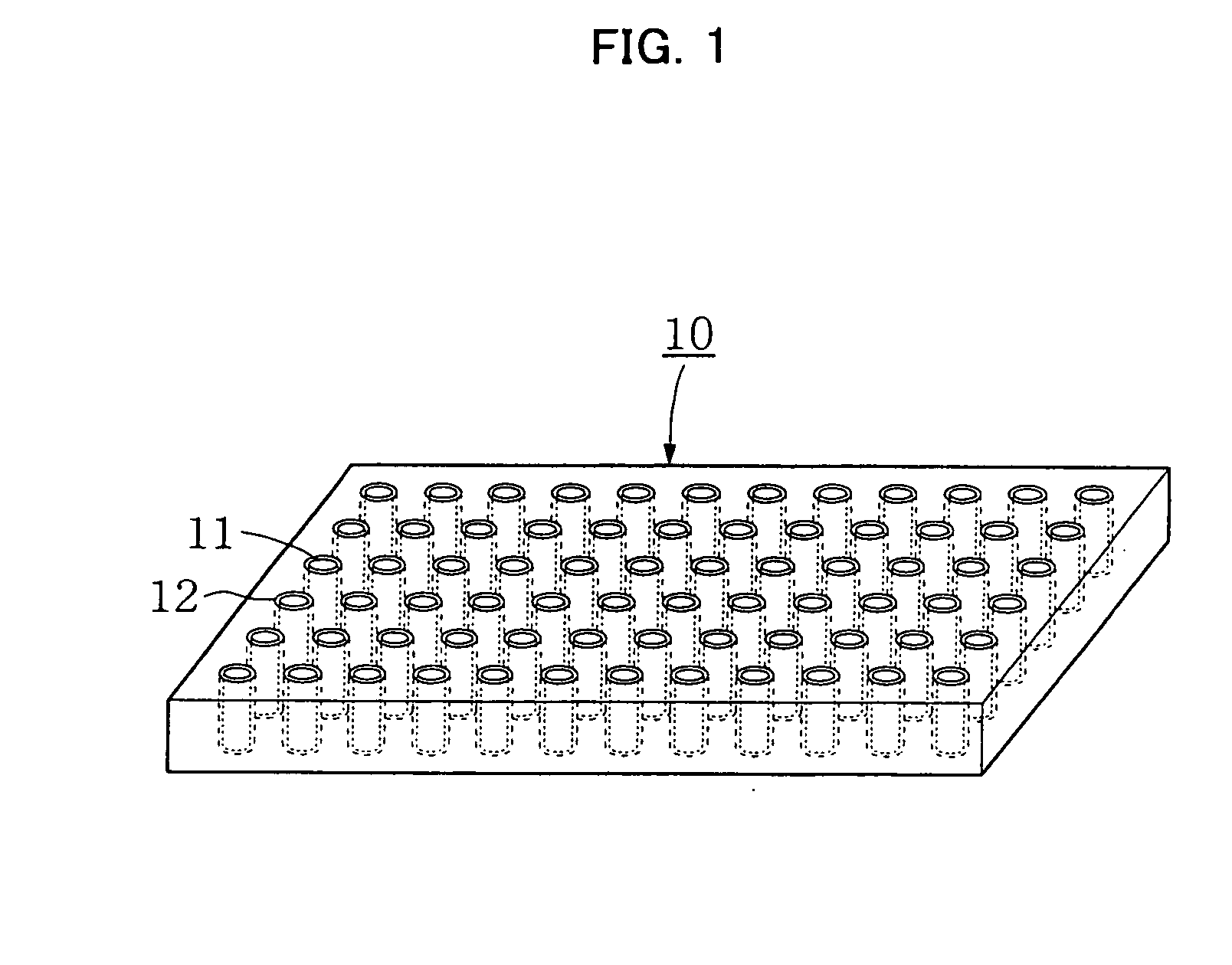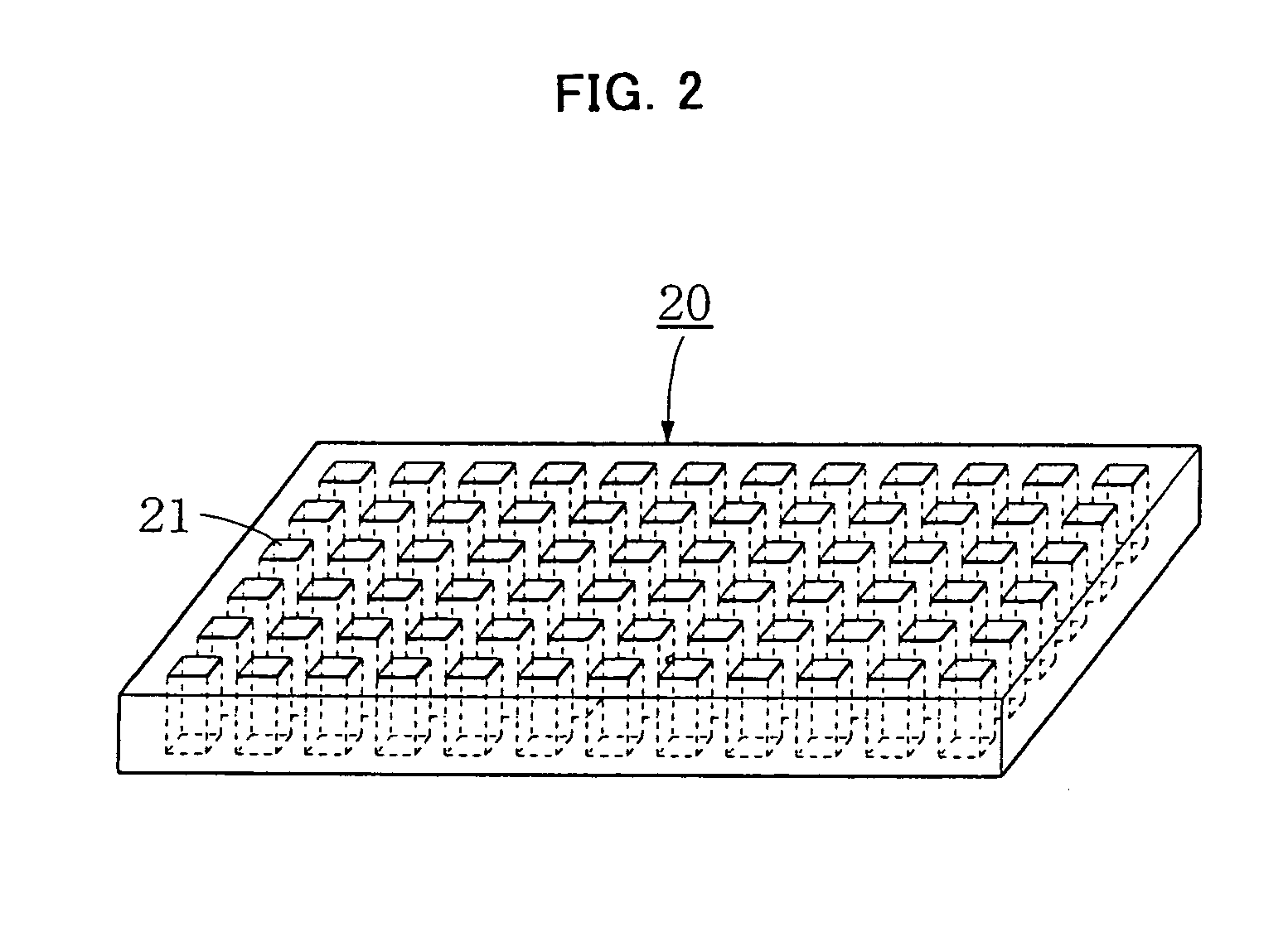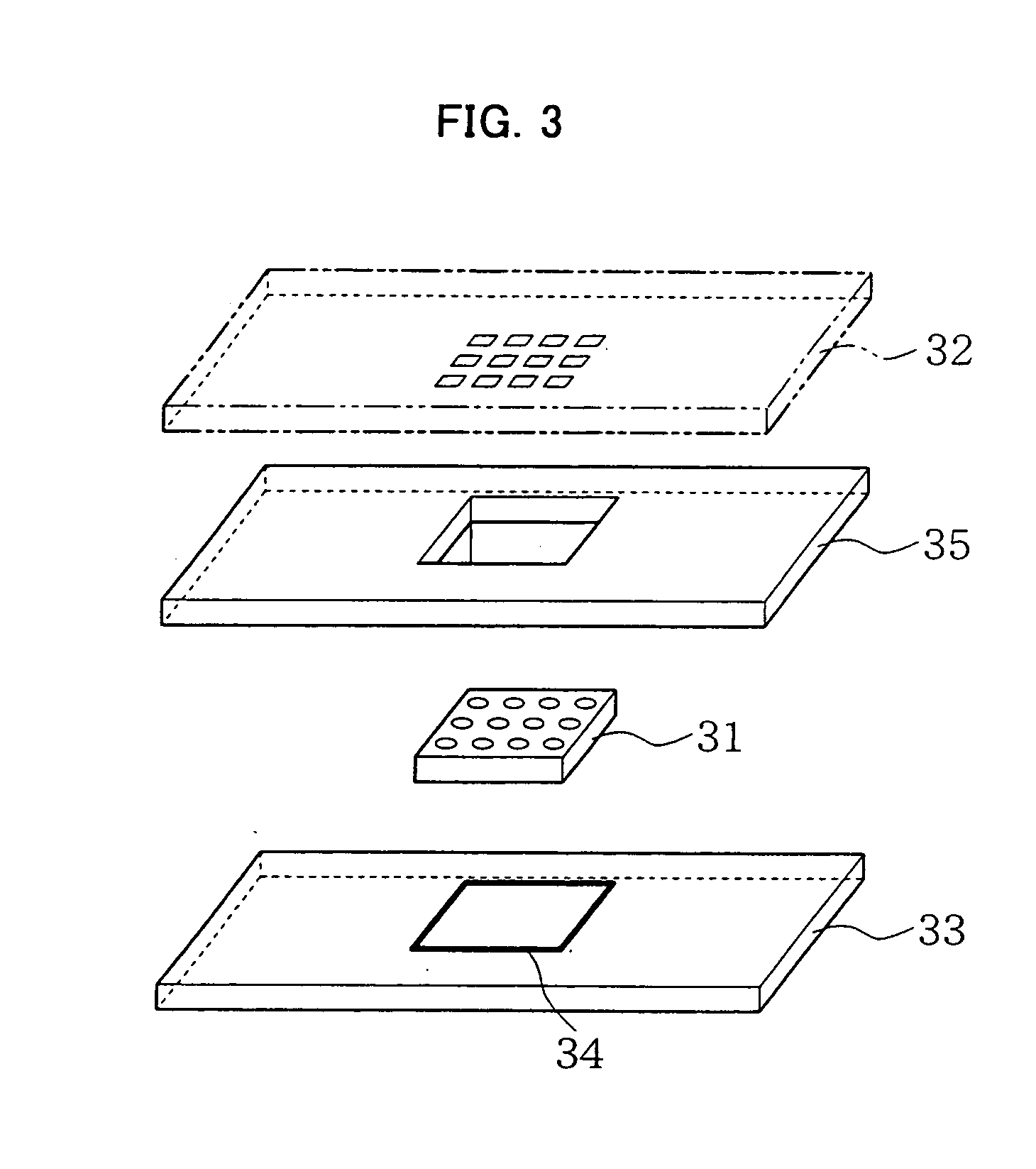Array for crystallizing protein, device for crystallizing protein and method of screening protein crystallization using the same
- Summary
- Abstract
- Description
- Claims
- Application Information
AI Technical Summary
Benefits of technology
Problems solved by technology
Method used
Image
Examples
example 1
Preparation of Hollow-Fiber-Array
[0167] A porous plate has holes which have a diameter of 0.32 mm, and a center distance of which holes is 0.42 mm. Specifically, 10 lines were provided lengthwise and breadthwise, respectively, that is, 100 holes are arrayed in total. A sheet of the porous plate with a thickness of 0.1 mm was superposed on another sheet of the porous plate. Through each hole of the two sheets of the porous plates, 100 hollow fibers made of polyethylene (with an external diameter of approximately 300 μm, internal diameter of approximately 160 μm, and length of approximately 50 cm) (MITSUBISHI RAYON CO., LTD.) were passed. The distance between the 2 sheets of the porous plates was determined to be 30 cm. The hollow fibers were kept strained and fixed at two positions: a position 10 cm away from and a position 40 cm away from one end of the hollow fibers.
[0168] Next, resin materials were poured between 2 sheets of the porous plates. As the resin, a polyurethane resin ...
example 2
Introduction and Immobilization of Polymer Gel to Hollow-Fiber-Array
[0169] A mixed solution consisting of the following compositions was prepared.
Acrylamide3.7 parts by massMethylene bisacrylamide0.3 parts by mass2,2′-azobis (2-amidinopropane) dihydrochloride0.1 parts by mass
[0170] The mixed solution and the hollow-fiber-array obtained in Example 1 were placed in a desiccator. The non-arrayed end parts (free end parts) of the hollow-fiber-arrays were immersed in the mixed solution, and then the desiccator was reduced to pressure to introduce the mixed solution was introduced into the hollow portions of the hollow fibers. Subsequently, the hollow-fiber-array was transferred to a sealed glass container having an interior saturated with water vapor, followed by a polymerization reaction at 80° C. for 4 hours. Thus, a hollow-fiber-array wherein gelatinized products were immobilized in the hollow portions was obtained. As a result, a hollow-fiber-array holding acrylamide gel inside wa...
example 3
Preparation of Hollow-Fiber-Array Thin Section Containing Gel
[0171] The hollow-fiber-array containing acrylamide gel obtained in Example 2 was sliced in a direction perpendicular to the fiber axis to have a thickness of approximately 2 mm using a micrtome, thereby obtaining a hollow-fiber-array thin section on which 10-by-10 (length-to-width), that is, 100 bundles in total, of the hollow fibers containing gel were regularly arrayed to form a square (FIG. 1). FIG. 1 shows the hollow-fiber-array thin section containing gel as prepared through Examples 1, 2, and 3. The hollow portions 11 of the hollow fibers 12 were filled with the gel prepared in Example 2.
PUM
| Property | Measurement | Unit |
|---|---|---|
| Volume | aaaaa | aaaaa |
| Area | aaaaa | aaaaa |
| Temperature | aaaaa | aaaaa |
Abstract
Description
Claims
Application Information
 Login to View More
Login to View More - R&D
- Intellectual Property
- Life Sciences
- Materials
- Tech Scout
- Unparalleled Data Quality
- Higher Quality Content
- 60% Fewer Hallucinations
Browse by: Latest US Patents, China's latest patents, Technical Efficacy Thesaurus, Application Domain, Technology Topic, Popular Technical Reports.
© 2025 PatSnap. All rights reserved.Legal|Privacy policy|Modern Slavery Act Transparency Statement|Sitemap|About US| Contact US: help@patsnap.com



